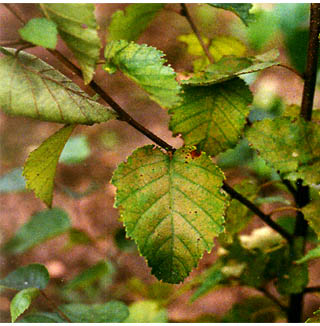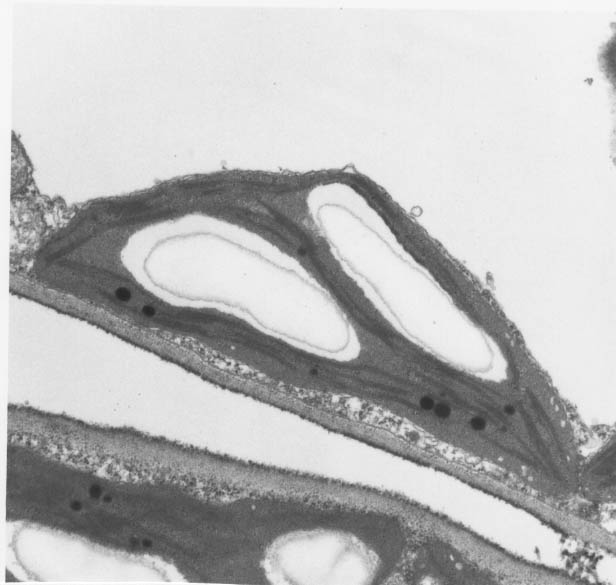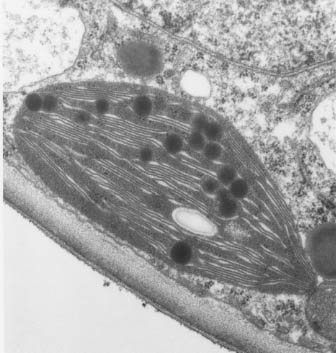|
Photosynthesis
Leaf Response
Growth Response
Pest Interactions
Soil Response
Ozone Modeling
|
|
|
Leaf Surface Response |
 |  |
|
Bifacial chlorosis and bleaching of leaves were the most common foliar
symptoms of O3
on paper birch (right). Premature senescence of leaves was also recorded
for both aspen and birch. No symptoms were seen on sugar maple, which
is O3
tolerant.
Trees in elevated CO2
+ O3
had significantly less visible symptoms than did trees in elevated O3,
suggesting that CO2
was compensating for the adverse O3
effects.
|
|
Cell and Organelle-level Injuries |

Normal chloroplast of aspen leaf cells, Clone 259 in Control Treatment,
showing intact thylakoid membranes and large starch grains, indicating
active photosynthesis and a low number of plastoglobuli (black lipid
granules). |

Ozone-induced chloroplast of aspen clone 259, showing disintegration
and breakdown of thylakoid membranes, accumulation of plastoglobuli
(= storage sites for membrane degradation material), and a small
starch grain, indicating low photosynthetic activity. |
|
- courtesy Elina Oksanen, University of Kuopio, Finland |
|